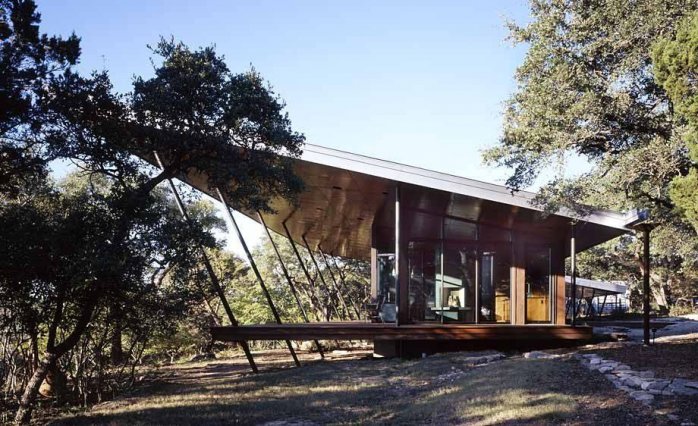Famous buildings in Britain

By building high, the architects give weary-eyed visitors views over the town - and give their building a presence on the skyline comparable with Walsall's other, principally 19th-century, civic monuments. The collection on display was drawn largely from a private bequest and the galleries are scaled to reflect the domestic environment in which it was formerly shown.
3 Lisson Gallery, London (Tony Fretton, 1992)
What distinguishes this commercial gallery in west London is its democratic relationships to the extremely varied surroundings. The principal facade is modelled in response both to the Georgian house alongside and to the Seventies tower block further down the street. A huge first-floor window faces towards a post-war school 50m away, drawing it, the intervening playground and the contents of the gallery into a remarkable composition.
4 Lloyd's of London, London
(Richard Rogers Partnership, 1986)
Quite why the headquarters of an insurance institution should look like an oil refinery, you may well ask, but for its barmy exuberance alone, Lloyd's deserves a place on this list. This is architecture that makes a great play of its adaptability - hence the key gesture of placing lifts and services outside so that they could be changed. But but when a campaign was launched this year to have the building Grade I listed - ie, everything would have to stay how it is - no one heard Lord Rogers complaining.
5 Robinson College, Cambridge (Gillespie Kidd and Coia, 1980)
Colleges tend to adhere to one of two types - the classic quad or the campus of freestanding buildings - but Robinson is neither. A single brick building, it has a castle-like presence in its suburban setting. The skill with which the architects have imposed a sense of hierarchy on an extraordinary variety of spaces lies at the root of its success.
6 Alexandra Road, London (Neave Brown/Camden Council Architecture Department, 1977)
This council housing in St John's Wood reasserts the terraced house as a viable high-density housing model. The long street around which the scheme is organised takes its curving form from the adjacent railway line but brings to mind the grand urban compositions with John Nash transformed London in the 19th century.
7 Leicester University Engineering Department, Leicester (Stirling and Gowan, 1963)
This short-lived partnership aimed to design each building in a style that reflected its use. Their final project reflected “the engineering style” in feats of structural bravura, such as the cantilevering of the two auditoria beyond the body of the tower. A declaration of war against the predominant culture of dour functionalism, it proved wildly influential.
8 Economist Building, London (Alison and Peter Smithson, 1964)
This ensemble of three towers rising from a podium brings the influence of Mies van der Rohe’s Chicago skyscrapers to St James’s, one of London’s most treasured conservation areas.
Maintaining the streetline and employing Portland stone cladding, rich in fossil deposits, the three blocks frame a raised yard that is one the most compelling public spaces in London.
9 Royal Festival Hall, London (London County Council Architects’ Department, 1951)
Created as the focal point of the Festival of Britain, the Royal Festival Hall embodied aspirations for a new society after the Second World War.
It was conceived as “an egg in a box”, the egg being the concert hall enclosed by a free-flowing foyer. Its refurbishment has done much to reinstate the architects’ intentions, although changes to the concert hall have met with criticism.






